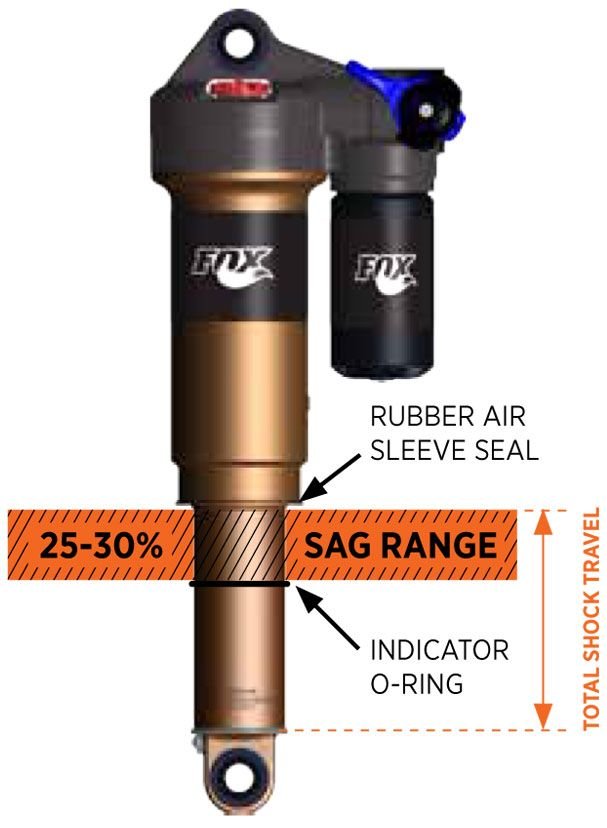Is your suspension set up causing your knee pain?
If you have been reading the blog for a while, you know my stance on knee pain and cycling. My thought is that most movement related pain is in fact, caused by movement dysfunction of some kind. Think of a medially collapsing knee during your pedal stroke. This inward movement of your knee causes excessive forces under the patella and over time can cause a lot of symptoms surrounding the knee. Fore more information read, Why is the front of my knee hurting? and Knee pain and cycling, where to start.
If you are performing any of the movements described in the above posts, you can expect some knee pain. If you have been working on cleaning those movements up and are still experiencing some symptoms another place to you can look is at your suspension settings.
The last three bike fits I have done on full suspension bikes have been very similar. Riders complaining of anterior knee pain, especially on technical climbing sections. Riding fire roads with their suspension locked out seems to be perfectly fine. With full suspension fits I always start at the rear shock. My preference is the rider has their sag measurements dialed in or at least has an opinion on where they like settings. If they are not familiar with this setting I will take some time to explain it. If you are unsure what sag is, let me spell it out. Sag, is the amount of travel you take up while simply sitting on the bike. As you sit down you should compress the suspension a little bit. This allows for a more active system as you ride. Not only can the shock compress as you hit bumps in the trail but it can also press the rear wheel into the ground as you unweight the bike and provide optimal traction. Sag is your friend for sure. Short travel or more climbing focused riders may like a sag measurement of 20% of the available travel. Long travel bikes or a more downhill focused rider may like 25-30% sag. When you take this measurement, be sure to have all your standard riding gear in place. If you ride with a pack, take this measurement with a pack and water on board. On most air sprung shocks this is easily altered with a shock pump.
Image via ridefox.com
Back to the knee, we find most of our riders have the best luck in reducing knee pain by having 30-35 degrees of bend in their knee at the bottom of the pedal stroke. Generally speaking this places the patella in an optimal position on the groove of the femur and allows for great power generation from glutes and quads. Sweet, comfy knees with lots of power. Too little knee flexion at the bottom of the pedal stroke and you can see some hamstring irritation, too much knee flexion and you can expect pain at your knee cap. The issue with full suspension bikes here is that your saddle position is going to change quite a bit. More often than not your saddle height is going to be decreasing as you hit technical terrain and add a lot of power to the pedals. This will result in greater knee flexion angles at the bottom of the pedal stroke. You guessed it, this may also bother the front of your knee.
As I thought about this more I wanted to try a few different sag measures on my own bike and see how much they changed my knee flexion angles. Here is what I found.
20% sag here. 28.3 degree knee flexion angle, not bad. Slightly out of our optimal range, could cause some hamstring issues overtime.
30% sag, my standard setting. This is the setting I used to fit my bike and set saddle height. Here we see a 31.3 degree knee flexion angle. Nice.
Just over 35% sag here, a little too compressed for my liking and showing a 39.1 degree knee flexion angle. This would definitely set me up for some anterior knee pain.
These squiggly lines show that there is is of course some variance in my knee flexion angles, even on the trainer. You should expect much higher variance while riding on the trail. This is why setting up your suspense to keep your knee in the "safe" zone of 30-35 degrees of flexion at the bottom of the pedal stroke is so important.
I was expecting some difference but did not expect to see values this high. With more sag we see a loss of saddle height and a saddle moving backward. Suspension and frame design will potentially change these measurements for your bike. If you are struggling with some pain at the front of your knee and are riding a full squish bike, you may want to double check your sag settings to ensure your knees are moving through a safe range. You just may feel a little better and have some more fun on your next ride.





